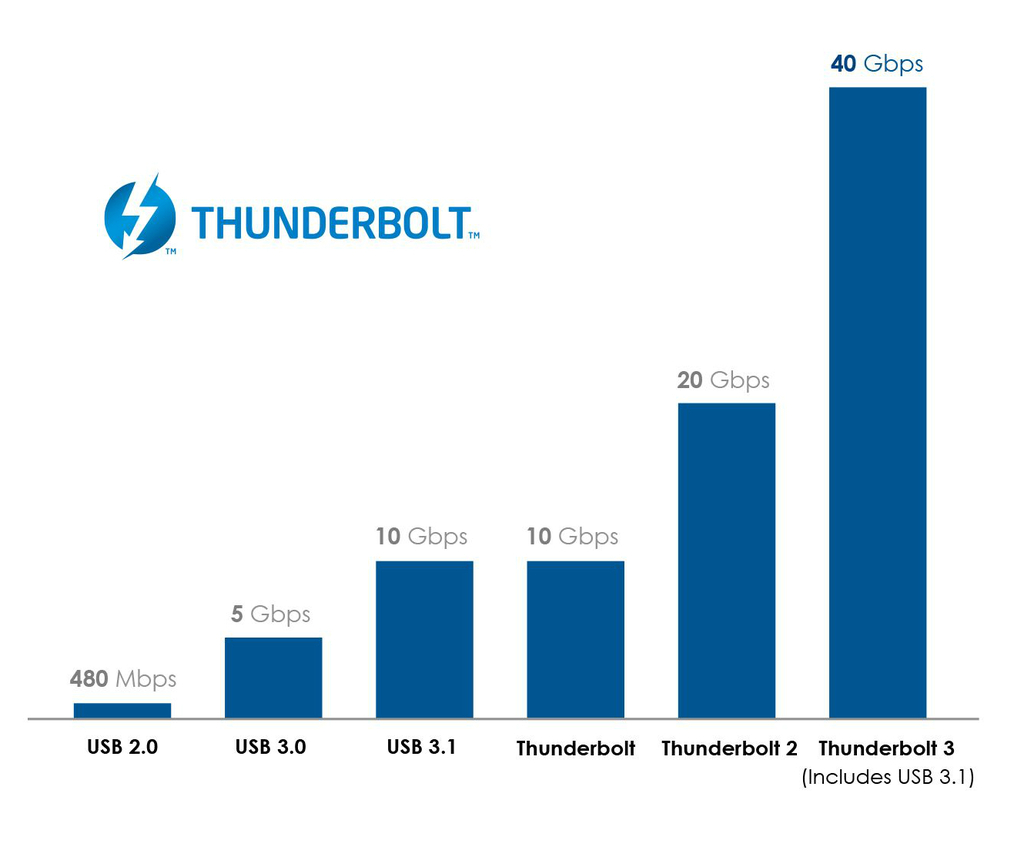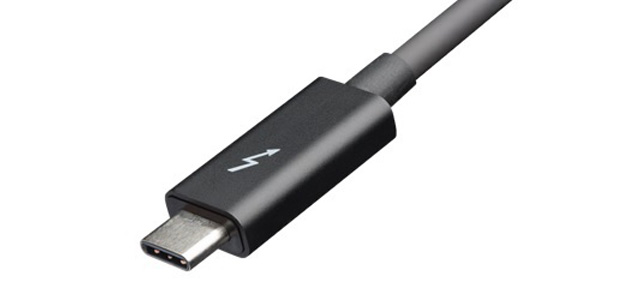These days, it seems like there’s always a new I/O port on the horizon. Not surprising considering the high bandwidth lives we all lead. Two of the connections announced in the past year or so are now starting to show up on newer motherboards – USB 3.1 and Thunderbolt 3. They seem pretty similar, right? Let’s go over USB 3.1 vs. Thunderbolt 3.
So what it USB 3.1?
We’ve covered the confusion that is the current USB landscape here on this blog before, but essentially, USB 3.1 is the successor to USB 3.0. Its benefits include data transfer rates of up to 10 Gbps and 100W of power output – enough to charge a full sized laptop – and 15W to all bus-powered devices (e.g. anything fully powered by USB like hubs, optical drives, and external hard drives). USB 3.1 can come in both Type A and Type C forms, but the Type C connection is the most versatile.
What is Thunderbolt 3?
Developed by Intel and announced in June 2015, Thunderbolt 3 has all of the advantages of 3.1 with a few additions. For one, it features an even higher bandwidth capability than USB 3.1 with data transfer speeds of up to 40Gbps – 4x over what we already thought was the breakneck speed of USB 3.1. In real world terms, that’s your average 4K movie file size transferred in less than 30 seconds. Crazy fast. Other features/advantages of Thunderbolt 3 include:
- Connection to dual 4K monitors, driving 16 million more pixels than a standard 1920×1080 display
- Connection with external graphics solutions
- Peer to peer connection at 10 GbE speeds

Where things get a little confusing is Thunderbolt 3 uses the same USB Type C port as USB 3.1, so you’ll often see motherboards advertising one port for both connections. This is true, since Thunderbolt 3 fully supports all USB 3.1 cables and connections, any Thunderbolt 3 port is technically a USB 3.1 port too.
So, if you’re the type concerned with future proofing, routinely move large files, or plan on connecting multiple 4K monitors, you may want to opt for a Thunderbolt 3 motherboard or capable laptop like our Raptor T15.
Josh Covington
Latest posts by Josh Covington (see all)
- What is CUDIMM? - January 29, 2025
- X870 vs B850: Choosing the Right Motherboard for Your Build - January 17, 2025
- How Much Power Supply do I Need? - January 15, 2025

Good article, thanks. You may want to correct the last sentence though…thunderbolt 3 not FireWire 3.
Oops! Corrected.
I thought Thunderbolt was all Apple? Is Intel playing the $10K a year to build devices? (USB signup for ID)
Intel and Apple co-designed the first Thunderbolt but Intel actually holds the IP and name trademark. Apple predominantly uses the Thunderbolt port, or at least has in the past, so most people do think of one when they think of the other.
Josh,
Your article is informative, but there are significant technical errors that need correction. I think you meant to say “Gbps” instead of “GBps” throughout the article.
This is when syntax is important, because B = byte = 8 bits, while b = bit.
The use of “GBps” implies the speed is 8 time faster than what you meant to say.
Wayne
Wayne,
You’re correct. Good catch! I have made this correction.
So is that to say that Thunderbolt 3 = USB 3.1? Or is it more correct to say that USB 3.1 is a subset of Thunderbolt 3?
Will a Thunderbolt 3 port support USB 3.1 Gen 2 device connected to its port using the Gen 2 10Gbs speed?
Will my port (USB C 3.1 Type1 ) will work with Thunderbolt?
Like, external GPU’s and such.
Having a USB C 3.1 port on your computer does not ALSO make it a Thunderbolt port. Its either one or the other….or “UNLIKELY” both. Sure the plug ends on both Thunder and USB C cables are the same size and both will fit the computer port but the technology is different. The computer port will only support whichever technology’s built into it.
Very informative article and thanks to the comments as well. As I understand the thunderbolt supporting device also supports the USB C 3.1, But it does not work the other way around. I mean there should be a difference.
Thanks anyway